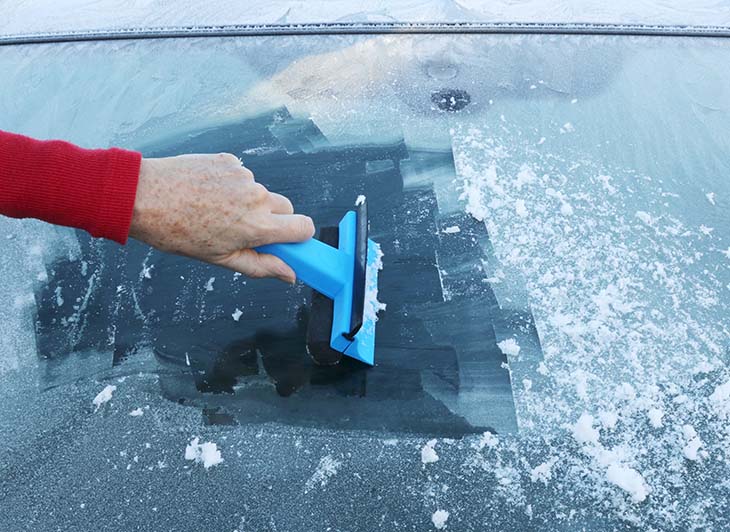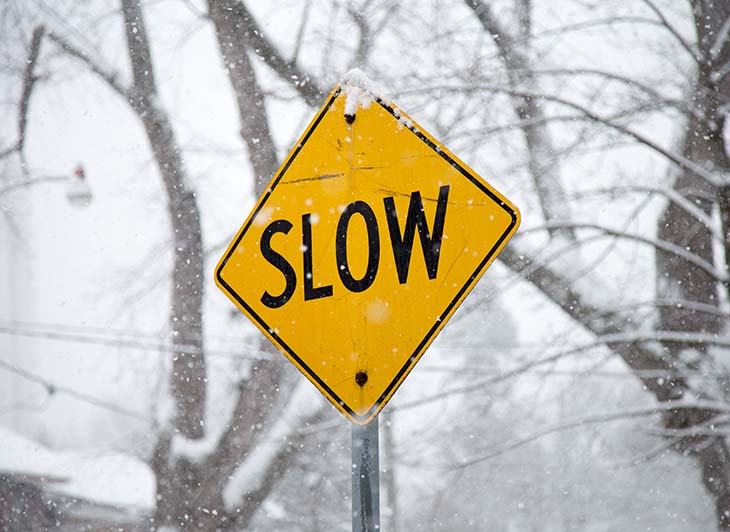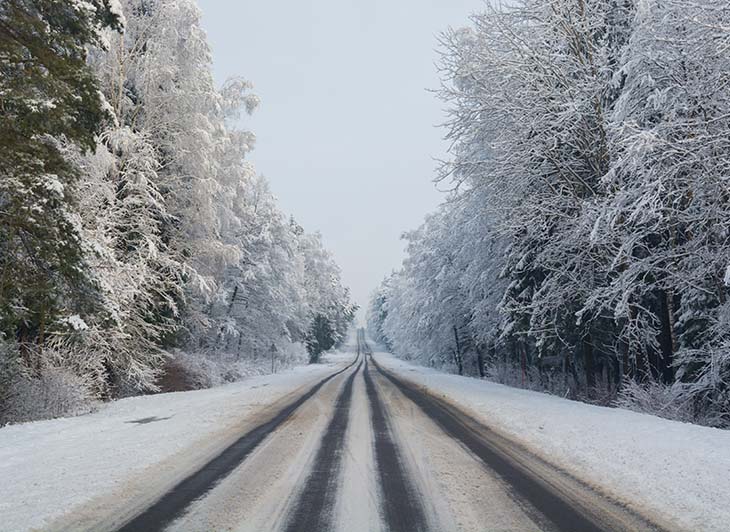Winter has arrived and with it comes the cold. While some might say it’s the most wonderful time of the year, if you are heading out on the roads this winter, chances are you are going to encounter two of the most difficult driving conditions – snow and ice.
While snow may look beautifully picturesque when you’re sat at your window staring outside, having to go out in your car is a dangerous business.
Ice is even more dangerous, as you can’t always spot it so quickly. And a sudden change in temperature can leaves roads more like an ice rink.
So what can you do? We’ve put together a list of essential tips for driving in snow and ice, so you can be safer in the wintry conditions.
1. Top up your anti-freeze
One of the big problems that comes with cars in the winter is the water levels becoming frozen solid.
When the weather is cold and you just want to get in your car and go, the last thing you need is to wait around for the engine to warm up enough to get going.
But, as you top up the water levels across the year, chances are you’ve been diluting the anti-freeze in your car.
So when the cold does hit, it’s going to be less protected against the chill. To avoid your water freezing over, take a moment to get some anti-freeze and add it to your car’s water levels.
2. Get a de-icer spray and scraper

Even if your engine isn’t frozen, chances are your windows and mirrors are likely to become covered in ice in the winter. This can again leave you waiting for the glass to clear, and you don’t want to be desperately scraping at the glass with a bank card or, even worse, your hands.
Buy yourself some de-icer spray and a plastic scraper, so you can clear your windows properly before you get going. That way you have a clear view of the road and won’t be taking a risk with your vision obscured.
3. Check your tyres
In icy and snowy conditions, your brakes are going to be vitally important. But if you don’t have the right grip on your tyres, then you are going to be in serious trouble.
Take a look at the tyre tread to ensure you have no bald patches or severe wear and tear. You should also check the air pressure of the tyres and make sure they are inflated to the correct levels.
4. Getting going
When you start off, you want to be moving slow and steady. It might be easier for you to start in second gear than first, as this will prevent you from spinning your wheels too much on the ice.
Even so, you need to be going slowly to start. That means checking around for oncoming traffic more than normal.
You want to give yourself plenty of time to get out on the road and up to speed. If you find yourself rushing, you are more likely to make a mistake that would be difficult to rectify in the conditions.
5. Slow down

The bad conditions mean you need to take your time on the road. Unless the path has been cleared and there’s plenty of grit on the roads, you should be travelling at a speed below the limit, giving plenty of space between you and the car in front.
If you have to brake sharply, the ice will increase your stopping distance dramatically. So you want to give yourself time to react to the other drivers on the road. Slowing down is the best policy you can have.
6. Getting out of a skid
Icy roads can often leave you skidding. No matter how slow you go, if you need to turn, you can end up sliding on the ice.
If your car does start skidding, you need to steer in to the skid. But you need to do this gently. Keep your hands on the steering wheel at all times and gently apply the brake to slow down. If you are too sharp with your movements, you are more likely to lose control.
7. Watch out for black ice

You might think that it’s a good idea to follow the tracks of the cars in front of you, especially in snowy conditions. While it may look like a safe trail to follow, the cars in front of you will have been compacting down the snow, turning it into ice. While it’s okay to be in it briefly, you should stick to following the road, not other drivers.
8. Stay with your car
If you do get stranded and need to call for help, you should stay with your car. Not only is it shelter from the conditions and a source of warmth, but if help does arrive, you are with the car and can be quickly taken to safety.
You should pack a few extra blankets with you during the winter, so you can keep yourself warmer while you wait without draining the battery.
9. Take a change of footwear
If you’ve been out walking on the ice and snow, your shoes are likely to be soaking wet. This means that you might end up slipping on the pedals. You also might find that your feet have become cold and wet, and numbed by the chill, which means you won’t be as comfortable on the pedals as you are normally. Having a spare pair of shoes and socks in your car can give you more comfort and control.
10. Avoid driving if you can
The best winter driving tip though is to try and avoid driving if you can. The conditions are the most dangerous you can find, and even if you do follow our tips and drive safely, there’s no guarantee other drivers on the road are doing the same.
Unless you have a snowmobile or a 4x4 fitted with winter tyres and chains, you should only make essential car journeys. Keep warm inside and wait for it all to melt away.
Upgrade to safety
Some cars are better equipped for winter conditions than others. For example, a four-wheel drive provides more grip and control over snow and ice, making you a lot safer. But with the range of safety features now available with newer cars, even a modern two-wheel drive can have improve your safety on the road.





 Facebook
Facebook Twitter
Twitter Instagram
Instagram LinkedIn
LinkedIn Youtube
Youtube